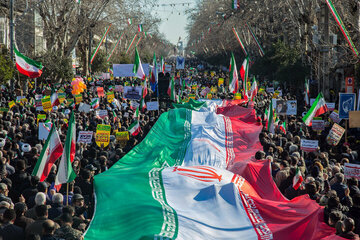Alwaght- The Balkans region and especially Serbia are increasingly changing into confrontation ground of the key global powers. Over the past few years, China has been ratcheting up its presence there, arousing sensitivity of the European powers and the US. Despite the concerns, the Serbian leaders underscore the need for cooperation with Beijing. While the Coronavirus crisis has been a pretext for anti-China criticism over the past few months, President Aleksander Vučić of Serbia recently said the “European solidarity does not exit” and added that the only country that in the current crisis can help Serbia combat the epidemic is China. He said he sent a letter to the Chinese leader in which called Xi Jinping a “brother and a friend.”
Earlier, Vučić in an interview with the Foreign Policy said that the Serbian relationship with the China has been triggering Western worries about closer ties between Belgrade and Beijing. He said he was proud that Serbia is part of China’s Belt and Road project and saw China as a permanent partner to Serbia.
Chinese soft influence in the Balkans
It has been years that Beijing has been planning to expand its global trade network as a political and economic strategy to bring the global trade centrality from West to East. At the present time, pursuing the ambitious Road and Belt Initiative is the main job of the Communist Party leaders to realize the party ideal of taking the global economic hegemony. Under its leader Jiang Zemin, China in the 1970s designed its “get out” policy, under which the Communist Party intensified the foreign investment to garner global influence.
In 2015, China approved a law that worked as a roadmap to implementation of the Road and Belt initiative. According to the roadmap, the initiative has nothing like the conventional patterns of regional trade. Rather, Beijing keeps the door open to any country to join in. To this end, getting the Balkan countries on board is of significance to the project.
In 2013, Beijing announced a fund of $50 billion to advance the project. Now over 60 countries have joined the initiative. This fund is aside from the $115 billion already-made investments the Chinese companies allocated for the member states.
According to figures published by the Center for Strategic and International Studies (CSIS), Chinese companies bankrolled by state banks invested some $15 billion in the Central and Eastern European infrastructure and industries since 2012. Furthermore, Beijing-based Asian Infrastructure Investment Bank (AIIB) as the leading finance partner of the project gives loans to the member states for 5 to 6 back-to-back years between $10-15 billion a year.
This huge volume of Chinese investments are suggestive enough to make some of European Union members to think broader partnership with Beijing, especially as China itself is willing for this cooperation and its trade with the regional European countries counts considerably.
Over the past years, China has been, before Russia and after Slovakia, the fourth largest exporter to Czech Republic. In the Hungarian market, China is third after Russia. It is also fourth largest exporter in the Polish market, as it is the fourth largest trade partner to Serbia.
In 2014, Belgrade hosted business summit of China with the Central and Southeastern European countries, a body known as 16+1. In that year, Chinese premier Li Keqiang visited Belgrade, the first visit by a holder of the post in 28 years, namely since breakup of Yugoslavia. One document that was signed during the visit and marked start of the modern-day Beijing-Belgrade business cooperation was an agreement to reconstruct Novi Sad-Subotica line as part of high-speed Belgrade-Budapest railway. The railway, constructed by the Chinese investments, is supposed to guarantee Chinese trade influence in the EU. The aim is that the Chinese goods reach Eastern Europe states through Kazakhstan, Caspian Sea, and Azerbaijan, bypassing Russia.
President Vučić once said that the railway will serve as a backbone of regional rail networks connecting China to Europe. Over the past years, Serbia and Hungary have been the destination of Chinese investments in Central and Eastern Europe that reach billions of euros. Poland and Romania stand next on the list.
In 2016, President Miloš Zeman of Czech Republic said that his country signed an agreement with China for the latter’s $3 billion investment and this cooperation facilitates China trade gate to Europe.
Beijing uses the 16+1 structure to promote ties and business with the Central and Eastern Europe states and believes it provides a gate to Western Europe.
Beside the long-term ambitions to seize the global trade wheel, China has short-term plans aimed at tackling the negative effects of the Trump-waged trade war on its economy. Strengthening its trade position in the Balkans and whole Europe serves as a bulwark of Chinese leaders in the face of the US trade war, though a temporary ceasefire is in place now.
The New York Times as a proof to the Chinese strategy in Eastern Europe echoed worries by the US officials about the Chinese trade entrenchment in Eastern and Central Europe saying that with tremendous financial resources China now rivals the US over the global trade leadership.
European worry; EU split
European diplomats are worried that Beijing will utilize the 16+1 summits to breach or bypass EU regulations and take advantage of the inter-EU divisions.
But China knows that the Eastern European countries need its finances for roads, power plants, railways, and other infrastructural construction.
China started its European partnership by buying companies, especially those active in estate markets. The Asian power seized the 2008 economic crisis as the best opportunity to get a toehold in the European economy. It offers $100 billion in loans to the European states in return for some privileges like enhancement of its position in the International Monetary Fund (IMF) and global trade. EU rejected the offer, arguing it was humiliating and dangerous.
Despite the EU opposition, the interests of trade with Beijing were too substantial for Europe to resist the offer. Soon, China turned into EU’s second largest trade partner. In 2013, China exported worth of $320.7 billion to the EU while in the same year the US exports to member states was $210.9 billion.
Motivated by its concerns, the EU calls on China to respect its rules. In response, Beijing said that a united Europe is only geographically, not politically and economically, possible to implement.
European leaders strongly think that China, and also Russia, with a policy of influence seeks specific political and strategic goals, posing potentially unpredictable challenges to the EU. Also, dependence of Eastern Europe to the Far East may in the future endanger the Continent’s unity, with the ultimate consequence being split of the EU. That is why the EU is severely opposed to China-financed Belgrade-Budapest railway project and also 16+1 summits.



























